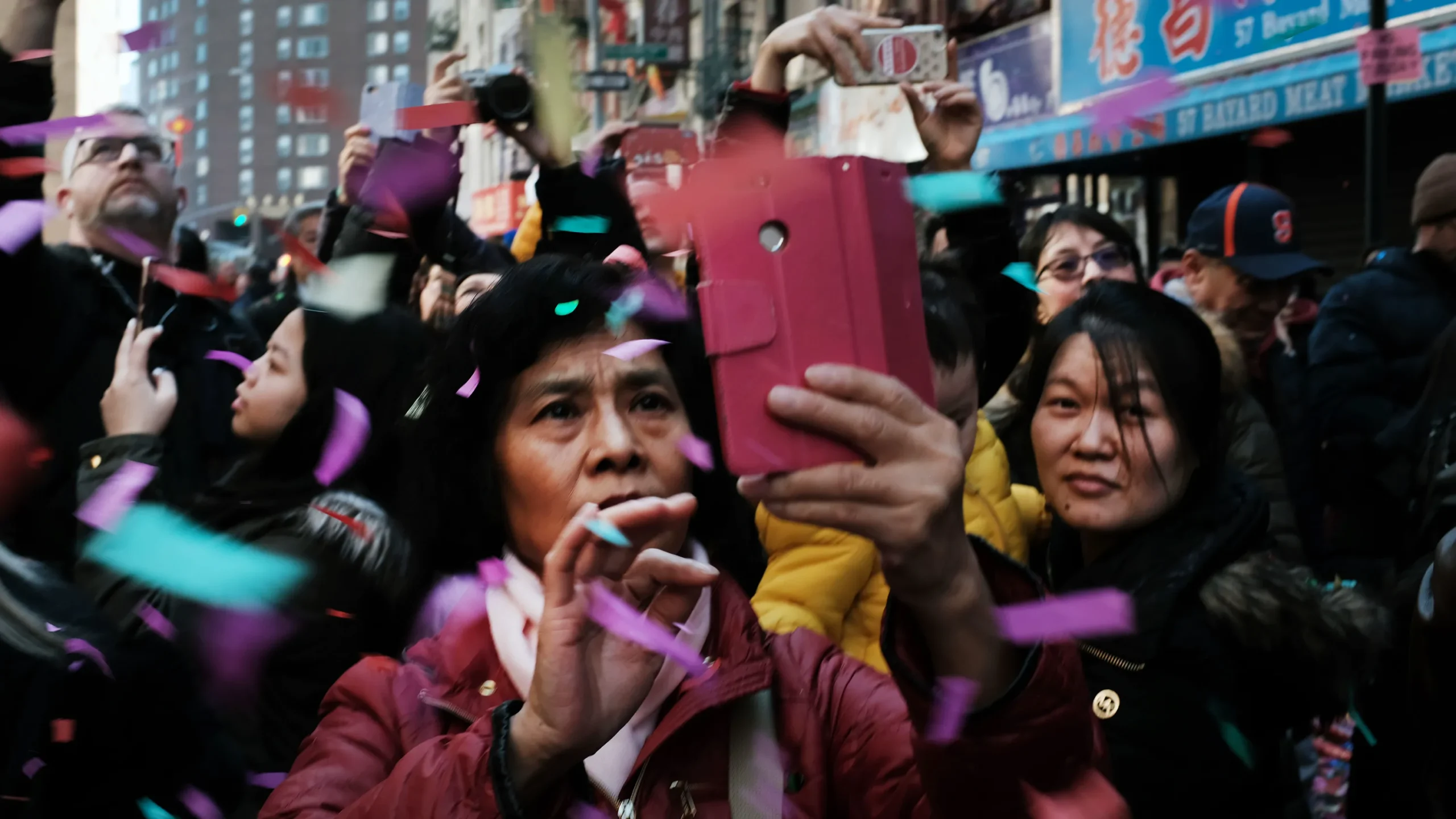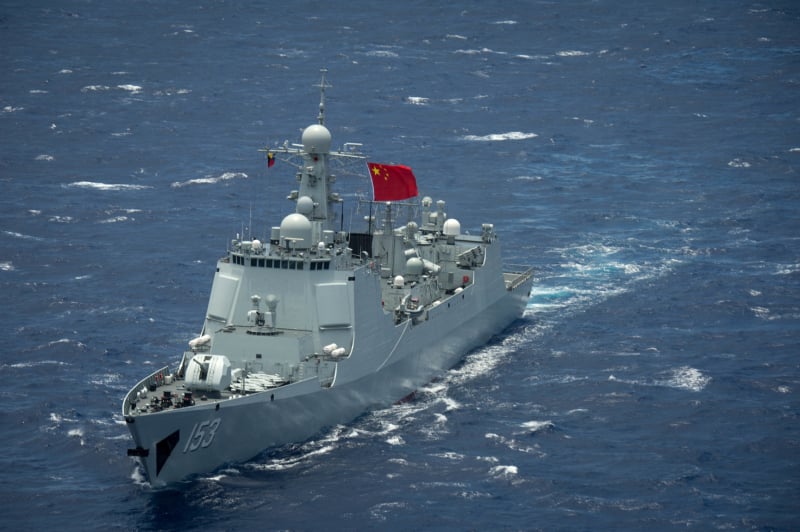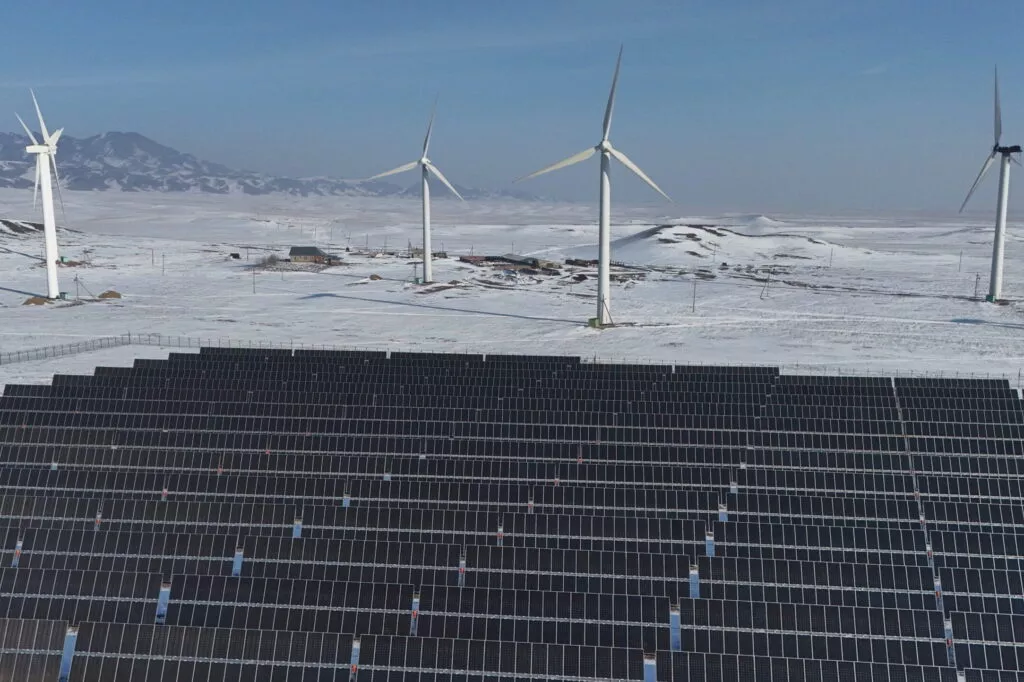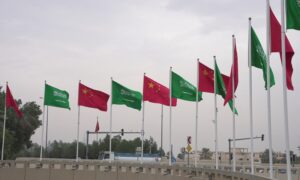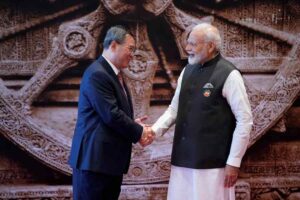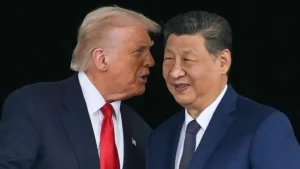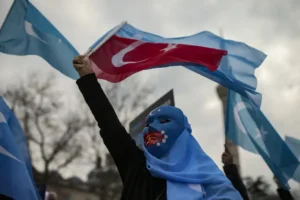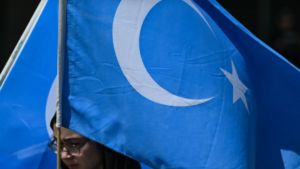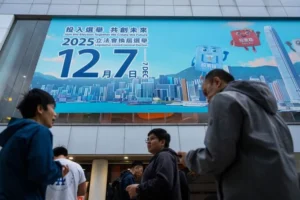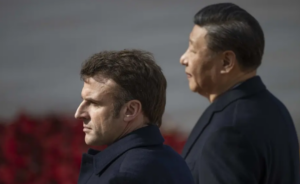What’s Going on at the Iran-Pakistan Border?
Pakistani Foreign Minister Shah Mahmood Qureshi is on a three-day visit to Iran’s capital. In a meeting with Iranian President Hassan Rouhani, both stressed the need for stability and peace in the region. Border security for the last few years has been a priority for both countries.
One crude method to improve security and promote legal trade, mutually employed by both countries, is a 959-kilometer barrier between Pakistan and Iran, planned to be complete by December this year.
But cross-border families are angry. With crossings restricted, thousands of pickup trucks, often called zambad by the locals, lined up at the border between Pakistan and Iran, have been held hostage for the last one month in uncomfortable heat and hunger.
Above these zambads are barrels full of fuel — the symbol of the notorious yet very common illegal Iranian fuel trade. Sale of Iranian oil is tightly restricted due to U.S. sanctions; once smuggled into Pakistan, however, the options for selling it are much broader.
The barren and underdeveloped nature of the region – despite the attention Pakistani Balochistan has been receiving since the inception of the China-Pakistan Economic Corridor – and the few options for employment on both sides of the border make it difficult not to break the law. But the reasons behind the illegal fuel trade are multilayered.
Enjoying this article? Click here to subscribe for full access. Just $5 a month.
For decades on and off, Iranian fuel smuggling has been a norm in the region, but the most recent oil boom came after the U.S. sanctions against Iran in 2013. Amid the sanctions, Iran overcame some of its economic difficulties through the cash flows generated by the illegal trade across Pakistan’s Balochistan border. Many experts even say that the smuggling of the fuel, mostly diesel, is actually very profitable for Iran’s economy. Thus even with security forces tightly monitoring the border, the Iranian government did not impose a complete crackdown on the illegal fuel smuggling trade.
On the other side of the border, although the Pakistani government has long been critical of the illegal trade, which is causing it economic losses at home, the security forces patrolling the border heavily benefit from the bribes they customarily receive from the smugglers. Therefore traders, zambad drivers, and others involved in the smuggling do not typically fear the dangerous terrain and the uncertainty of the work they do.
Diplomat Brief Weekly Newsletter N Get briefed on the story of the week, and developing stories to watch across the Asia-Pacific. Get the Newsletter
However, in the last decade, due to increased restiveness and security concerns on both sides of the border, both countries agreed upon fencing the border line. Pakistan’s concerns increased after its inking its deal with China on the China-Pakistan Economic Corridor (CPEC), which begins with Gwadar Port in the restive province. The economic losses caused by oil smuggling also contributed to the decision of fencing the border.
In January this year, Pakistan’s Prime Minister Imran Khan chaired a high-level meeting to develop a consensus at all levels to take strict measures against illegal trade. It was established that the smuggled fuel was causing a loss of at least 100 to 150 billion rupees ($650 million to $980 million) to the economy each year. With a crackdown on smuggled Iranian fuel, as suggested by the Pakistani Senate, the economy can potentially generate a fair amount of revenue that can then be allocated for the development of the border region.
But government development projects are not a major concern for the residents of the region anymore after their experience with CPEC, which has left the residents of Balochistan behind despite many promises. The anger over the crackdown at the border gave way to an online campaign, #JusticeForBorderVictims, after the reported deaths of four zambad drivers who have been stuck at the border for weeks.
“It is not the first time that the entire border is closed, but it has never been for thing long,” Shams ul Haq Kalmati, the president of Gwadar Chamber of Commerce and Industry told The Diplomat. The border has been shut down for at least a month. “And it is not only the border line of Gwadar district, but across Balochistan. There is no alternate to the economic benefits of the fuel trade for thousands of families from both sides of the border. Not even the joint border markets that government is planning to establish can fill the gap.”
The joint border markets are a mutual plan by the Iranian and Pakistani governments to encourage bilateral cooperation and legal cross-border trade. Pakistan’s foreign minister is in Iran partly to advance the same cause. A Memorandum of Understanding (MoU) to open a new border crossing and establish six joint border markets across the border was signed by Qureshi and his Iranian counterpart, Javad Zarif. The first three markets are planned to be opened at the border points of Kuhak-Chadgi, Rimdan-Gabd in Gwadar district, and Pishin-Mand in Kech district.
An unofficial analysis by local leaders in Gwadar found that all Balochistan heavily relies on the illegal fuel trade with Iran. Thousands will be left jobless if the crackdown continues. The analysis mentions that at least 9,074 registered fishing boats, 54 fish factories, 125 local trucks and loaders, 25 buses that travel to Karachi and Quetta, and even a number of vehicles used in Gwadar Port use the same fuel. And these unofficial statistics only cover one district of Balochistan.
A senior journalist in Gwadar, Bahram Baloch, told The Diplomat, “It is not that the border is entirely closed now. The few legal border [crossings] are still open, but the fuel trade has always relied on the illegal border crossings, which are now in the process of being fenced. This is causing thousands of trucks to wait at the border in the hope of the borders opening.”
It is to early to say whether the border fence will be permanent. But if it is, several questions raise concern. Are the Pakistani and Iranian governments ready to provide alternate employment for thousands of people who relied on the illegal trade? With the sanctions still in place, how will the Iranian government fill the gap left by the cash flows it received from the trade? And will the revenue Pakistani government expects to receive through the border markets actually be invested for the development of the region? Without having the answers for these questions, it is too early for both countries to firmly stick to the plan.

